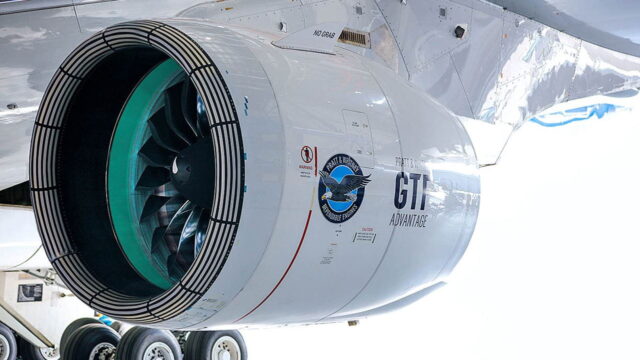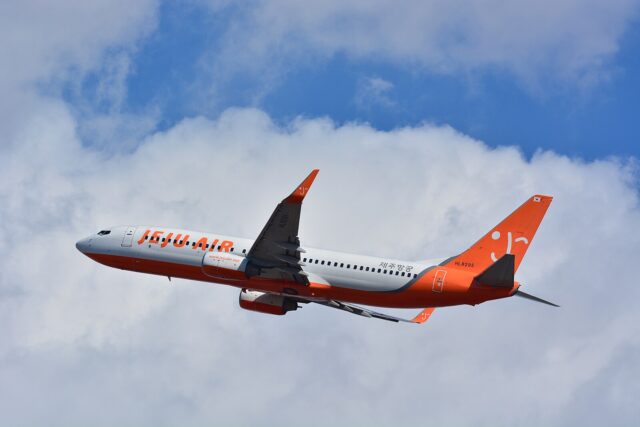AGN Exclusive: Inside the UK’s outsourced pilot training model the US Air Force now wants to copy

October 14, 2025

When Affinity Flight Training’s Managing Director Iain Chalmers left the RAF to help build a new training provider in 2016, Britain’s use of private contractors in military aviation was already well established.
“The Air Force is a small organisation,” he tells Aerospace Global News. “It wants to focus its operational people where they are most needed, on the front line, while keeping enough in the system to maintain that operational focus in training.”
That philosophy sits at the heart of the UK Military Flying Training System (UKMFTS), a 25-year public–private programme launched in 2008 and valued at more than £3 billion.
Operated by Ascent Flight Training, a joint venture between Babcock International and Lockheed Martin, it delivers every stage of flying instruction for the RAF, Royal Navy and Army Air Corps. Affinity is one of Ascent’s core aircraft service providers, responsible for the fixed-wing fleet that prepares students for operational conversion.
How Affinity built the UK’s modern military pilot training fleet
When the contract began, Affinity was little more than a concept. “There were seven of us who started the business,” Chalmers recalls. “Our job was to buy the aircraft, oversee construction on three continents, make sure they were built to a standard acceptable to the MOD, and stand up the organisation from scratch.”
Today, Affinity operates three fleets across the fixed-wing training pipeline:
- Grob Prefect T1, used for elementary training at RAF Cranwell and Barkston Heath
- Embraer Phenom 100 (Phenom T1), used for the multi-engine course at Cranwell
- Beechcraft Texan T6C (Texan T1), used for basic fast-jet training at RAF Valley

Chalmers said the common design across aircraft makes student progression smoother.
“Although they are built by different manufacturers, you can easily go from one to the other,” he explains. “The displays in the cockpit are very similar.”
This shared technology helps students transition from simple trainers to more advanced, jet-like aircraft, while developing the decision-making and information-management skills demanded by modern fighter operations.
How technology is reshaping military pilot training
Across the pilot training spectrum, there’s much chatter about emerging technologies like AI and virtual reality. While these technologies are enjoying some success in civil flight training, Affinity’s approach is deliberately cautious.
“We would never recommend, and the RAF wouldn’t either, introducing technology for its own sake,” Chalmers says. “It has to contribute either to safety or to better training outcomes.”

A traffic-avoidance system has already been installed across the fleet, and new cockpit software allows instructors to adjust how much information students see during flight. “It means they can increase or reduce workload, just as they would in real-world flying,” he adds.
The company is also exploring helmet-mounted systems for the Texan. “We’re looking at whether that technology can be fitted, certified and made practical for our aircraft,” Chalmers says. “Once we know what’s possible, the Air Force can decide how and when to use it.”
Sustainability and SAF in UK military flight training
Environmental responsibility is becoming a central consideration for training providers. While strides are being made in electric and hybrid training platforms, the short-term solution to greener pilot training is the use of sustainable aviation fuels (SAF).
“Our aircraft aren’t currently flying on sustainable aviation fuel, but they’re ready to do so when the supply chain makes it viable,” says Chalmers. “The challenge is getting enough volume so the cost comes down.”
Affinity has strengthened recycling and waste-management procedures and expects sustainability to feature heavily in the next round of MOD contracts. Chalmers highlighted Project TEAL — the future Air Cadet flying programme, which aims to be “green at the point of delivery”.
US Air Force begins outsourcing pilot training after the UK’s success
While the UK has spent more than 15 years refining its contractor model, the US Air Force is only now beginning to experiment. In July 2025, Acron Aviation, a civilian Part 141 flight school, signed an Educational Service Agreement with the USAF to deliver initial pilot training for officer candidates — the first deal of its kind since the Second World War.
The arrangement allows candidates to complete early-stage flying in a civilian environment before entering the Air Force’s formal Undergraduate Pilot Training programme. It reflects both a shortage of military instructors and growing recognition that commercial providers can handle early flying phases more efficiently.

Chalmers believes the difference is largely cultural. “The US Air Force has never really had to outsource before,” he says. “The UK is smaller and has to focus its operational people on the front line, so it made sense to work with industry to deliver training.”
He acknowledged that contracting only succeeds when both sides understand each other’s worlds. “Getting it right can be a challenge,” he says. “Military culture and ethos are important, and if you don’t get the contracting right, you can clash. But after nearly a decade, we’ve learned how to make it work.”
Future RAF fast-jet training and the Hawk replacement
With the RAF’s Hawk T2 trainer approaching retirement, attention is turning to the next generation of fast-jet instruction.
Aeralis has pitched its modular platform as the Hawk replacement, and is in the process of setting up a factory near Prestwick Airport in Scotland. However, the decision is not yet made, and other models, including the Leonardo M-346 Master and T-7A Red Hawk, are also under consideration.

“We don’t yet know what the future fast-jet training system will look like, but we have an idea of the contenders,” Chalmers adds. “They will have wide-area displays and in-built training systems.”
Affinity is staying close to the process. “We’re in contact with everyone who could be involved, and we’re engaged with both Ascent and the MOD,” he confirms. “I think the MOD will need to move quite quickly if contracts for a Hawk replacement are to be let by the middle of next year.”
What the US can learn from the UK’s pilot training model
Britain’s experience shows that outsourcing flight training can work, provided oversight and communication are strong. The advantages are clear: stable investment, access to civil-sector innovation, and freedom for uniformed personnel to focus on combat readiness rather than fleet management.
The trade-offs are equally real: long contracts can limit flexibility, and military ethos must be carefully preserved, but Affinity’s success suggests the balance can be struck.
From seven people in an office in Canary Wharf to hundreds across Cranwell, Barkston Heath and Valley, the company now operates three of the RAF’s core training aircraft and is positioning itself for the next generation. For the US Air Force, beginning its own outsourcing journey, Affinity’s experience offers a working example of how to blend civilian efficiency with military purpose.
















